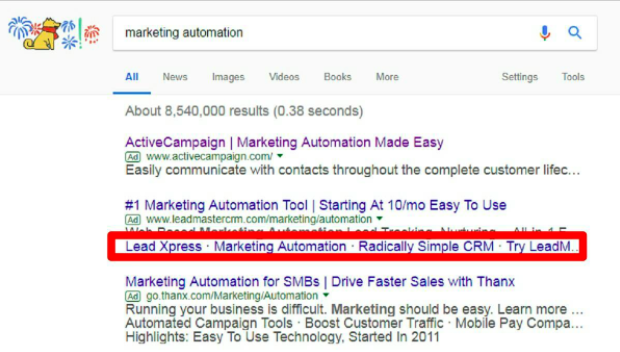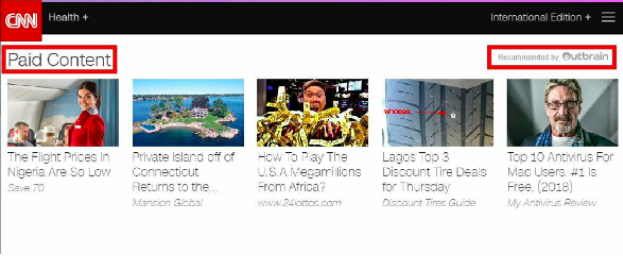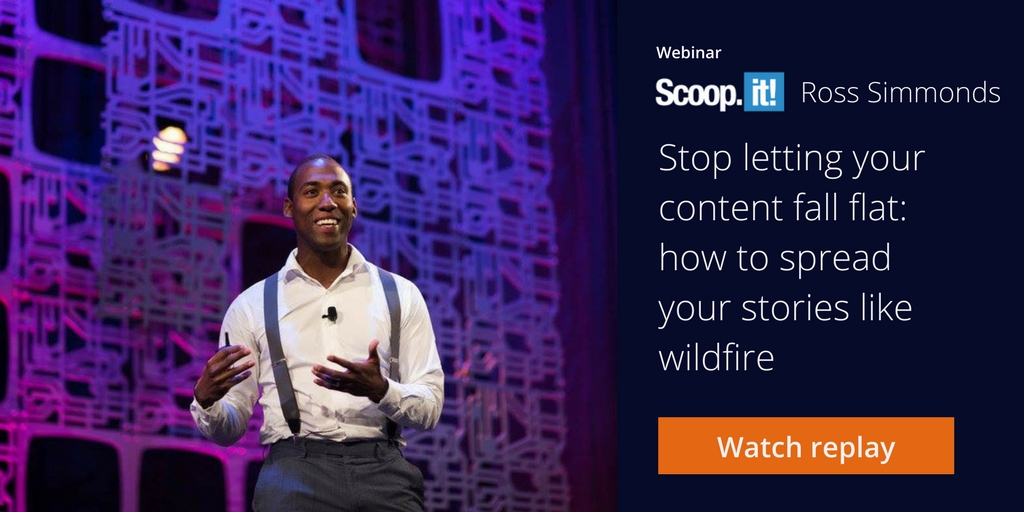
According to the Content Marketing Institute’s annual research on content marketing trends, 53% of marketers attribute the success of their content marketing campaign last year to their content distribution efforts. They had figured out their target audience, and what platforms work best for them, and that contributed to the successful 2017 they had.
Undoubtedly, content distribution is important. In fact, almost everyone creating content is doing it. But does this mean it’s working for them or they’re doing it right? Of course not.
Here are common mistakes marketers like you are making, and what you can do about them to have a successful 2018.
1. Not fixing problems along the way
You’ll face difficulties or challenges while executing your content distribution plan. The question, and one rarely answered, is, “what will you do when you face challenges?” Will you try to manoeuvre matters or will you jump ship?
First, here are some common challenges you’ll face, depending on components of your content distribution strategy:
- Low click-through rates
- Unsuccessful influencer outreach
- Click fraud, if you use paid ads
- Low ROI
They are not limited to those four, but it gives you a glimpse of what can go wrong. How can you handle these problems?
Generally, if you have low click-through rates, you may want to test your copy, whether that’s a headline or not. Unfortunately, if you’re using a tactic like sponsored posts, you’ll likely pay all over again to be featured, and to see if your click-through rate improves.
Nevertheless, for paid ads, be specific with your ad text, and don’t try to be clever. Also, use Google Adwords Ad extensions to help you provide additional information that may draw people to your site. Here it is in practice:

There are other extensions like location extensions, product extensions, or call extensions you can also use.
Click fraud costs advertisers billions of dollars annually. To put it in perspective, according to Adage, for every $3 spent on ads, fraud takes $1. It’s little wonder that some are tempted to abandon PPC ads completely.
However, a tool like ClickCease can help you automatically combat and possibly win the battle against click fraud. And there are several other tools like it. Do your research and chooseone that works for you.
The point is, whatever challenges you may face, jumping ship isn’t always the best option. Tweak, make changes, and carry out tests and experiments. You may eventually resolve the problem, and if you don’t, you’ll know you gave it your best shot.
2. Focusing on one tactic
This is an easy snare to fall into. Probably you’re following a particular content distribution strategy and it’s working well and giving a great return on your investment of time or money. It’s easy to reckon that trying a new strategy is pointless.
In my experience, there are two extremes:
- The marketers who solely support paid content distribution channels on the basis of it’s potentially quick ROI
- Marketers who think paid content distribution channels are a shortcut for lazy marketers
It’s not as simple as both parties make it look. Because whether you’re for or against paid content distribution, they’re both important and have their place in a good content distribution strategy. Still, focusing on one method can be limiting.
Ideally, a good content distribution strategy will include both paid and owned media channels. Because the truth is, even some earned media platforms are limiting if you don’t spend money. For example, Facebook is largely pay to play nowadays with marketers noticing declining organic reach on the platform.
Also, if you’re trying to get better results from your best content, owned media can only get you so far. Using a paid distribution platform can give new life to such content and may be just what it needs to provide the results you crave.

Then again, focusing solely on earned media isn’t practical for many who have the budgets to mix things up or hasten the process of getting results from their content marketing efforts. So instead of judging others for what content distribution channels they’re using, it may be beneficial to consider trying newer or stranger (to you at least) channels to amplify your efforts.
3. Following advice from gurus closely
Don’t get it twisted, marketing gurus give great advice. Without them, probably most of what you do today marketing-wise would consist mainly of trial and error judgments and wasting precious time on unproductive tactics. Thankfully, other experts have simplified and made information on what’s working for them freely available.
The problem?
Some of such advice they give based on what’s working for them will more than likely not work for you. Consider for example, a case where a guru tells you that sharing your content with your email subscribers will increase its reach. It sounds good, until you realize that with only 1,500 subscribers, you will definitely not get the same results with the expert who has 500,000+ subscribers–you won’t even come close. Of course, aiming for the same click-through rate or higher is more feasible.
Worse still, some gurus still follow and promote outdated tactics that worked when they started out ten years ago. Additionally, if you’re doing influencer outreach and you’re not a well-known name, you may find it difficult to replicate the results you’re told you should be getting.
Like I mentioned earlier, carry out tests and experiments. For example, to improve the click-through rate of your emails, the folks at iContact recommend:
“Send one version to 10% of your list, and send the other to another 10%. Then analyze the results. Hit the remaining 80% with the more successful email.”
I can go on and on, but it is clear that just because a marketing expert tells you a particular content distribution platform or tactic is working for them does not mean it will work for you. Many variables will affect your results, including your target audience, your budget, your team, and sometimes even your tools. Choose what or whom you listen to carefully.
4. Focusing on the wrong metrics
Some marketers today still use wrong metrics to measure how effective their content distribution efforts are. Well, they’re not completely wrong depending on what their objectives are, but it will differ with content distribution platform.
For example, here’s a PPC ad on Google. What do you think is or are the right metrics to track for this ad?

Do you imagine they’re thinking of “likes” here? Definitely not.
Compare it to writing a post on Medium. A metric like the number of claps your article gets is fancy, but it’s equally not so important if you’re not considering the number of shares because it’s more important if the content is shared and more people are seeing it. When that’s happening, you can then consider click-through rate to any offers you made or or even the ratio of claps to views.
For PPC, Unbounce says that good PPC metrics are:
- Traffic focused
- Conversion focused
- ROI focused
There are many platforms, and metrics to track will go by different names across different platforms (think likes on Facebook as opposed to claps on Medium) but those PPC metrics are generally a good rule of thumb to follow. You’ll find that some marketers despise traffic-focused metrics, calling them vanity metrics, but there can’t be any conversions or ROI if there is no traffic, so traffic is important too.
Focus on the metrics above, and you’ll successfully judge the performance of your content distribution efforts.
Positive results are yours
Nobody is perfect, so sometimes even with our best intentions, we make mistakes. You’ve probably made these content distribution mistakes in the past. Use what you’ve read to correct them, and you’ll find more success with your content distribution efforts in 2018.


